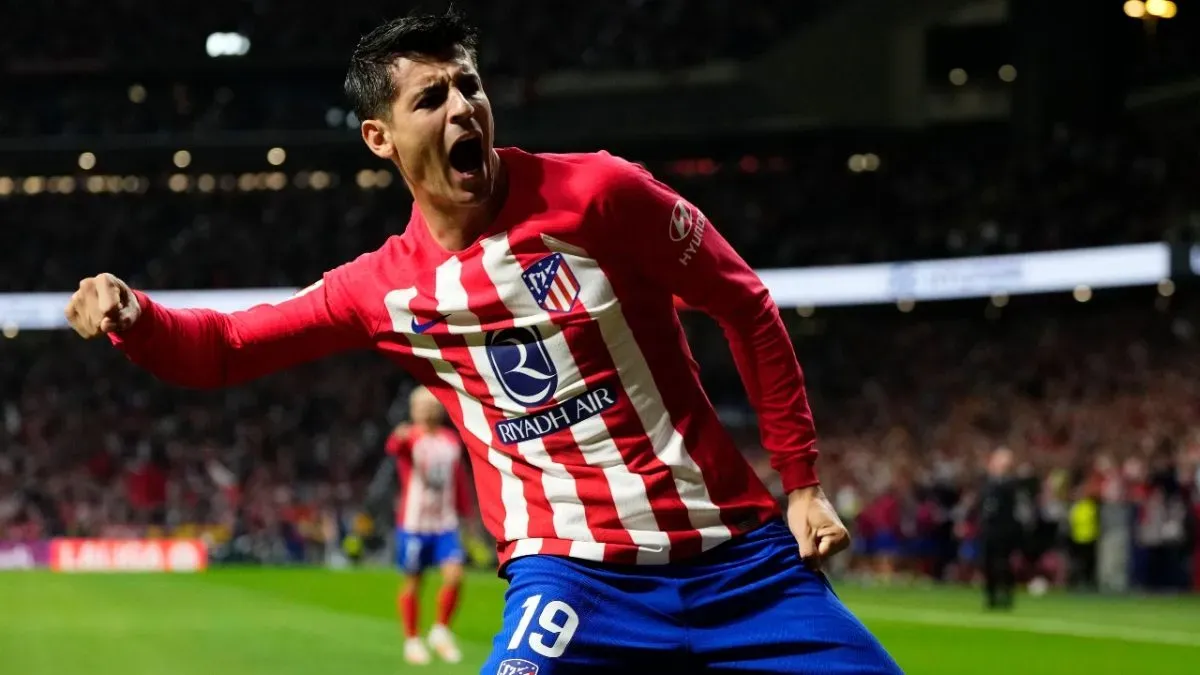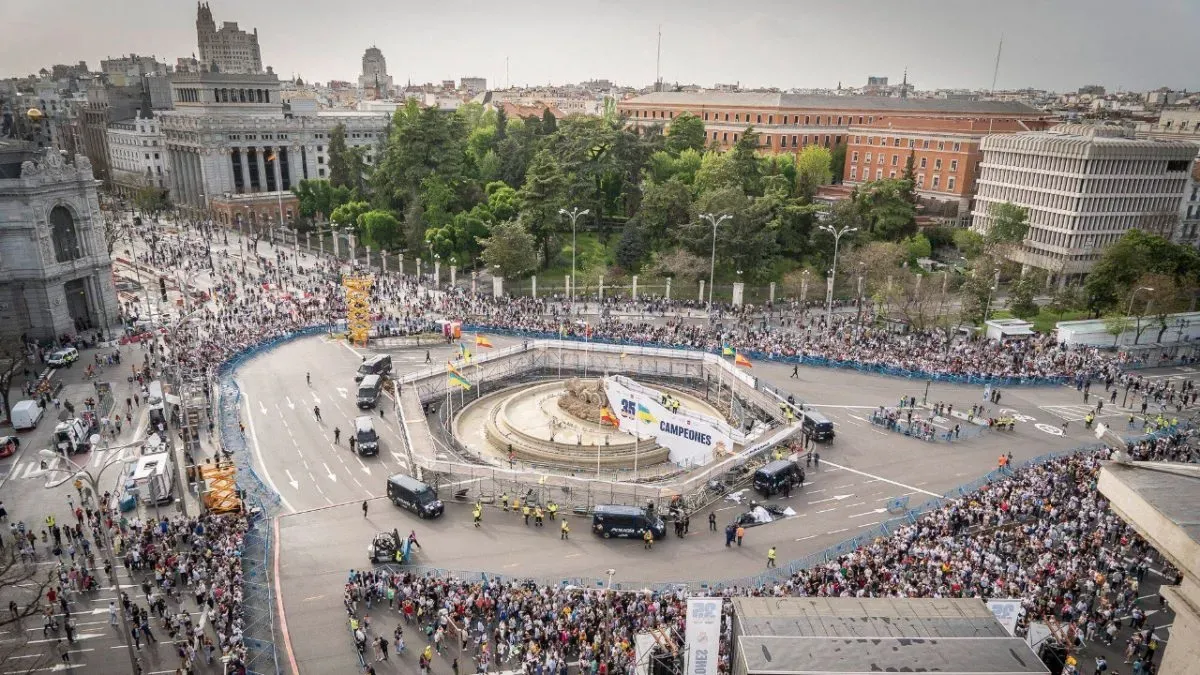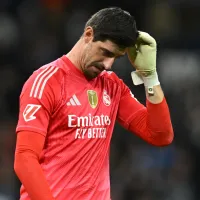Something about a derby match seems to embody the genuine passion and intensity of soccer; they undoubtedly transcend the ordinary fixture. That includes El Derbi Madrileño. Therefore, here’s the history of the Madrid Derby.
In Madrid, a city renowned for housing two of the most illustrious teams in the annals of Spanish and European soccer, the rivalry between the capital’s clubs is both enthralling and intriguing. Anyone who has watched the Madrid Derby can attest to the extraordinary level of competition, the surging adrenaline, and the palpable tension that permeates matches between these two clubs.
In its prime, this rivalry outshone El Clasico and delivered both teams a rollercoaster of emotions, iconic monikers, and a substantial number of club legends who initially donned the colors of their rival.
This battle even carries a mythical dimension, as you may already be aware, involving two gods, Cibeles and Neptuno. When Real Madrid triumphs, supporters converge upon the fountain of the goddess of the sea, while an Atletico victory sees fans congregating around the fountain of the god of the sea. But the origins of all this are worth exploring.
How did the Madrid Derby come to be?
People often argue that the rivalry between Real Madrid and Atlético de Madrid transcends mere sporting competition. The contention revolves around the perception that Real Madrid represents the elite and the wealthy, while Atlético is seen as the team of the working class. However, it’s essential to acknowledge that supporters of both teams come from diverse backgrounds and walks of life.

According to many fans, the roots of this rivalry can be traced back to 1903 when Athletic Club clinched the Championship of Spain against Madrid Foot-Ball Club (founded the year prior). After the game, a group of students from the School of Mining Engineers, all ardent Athletic fans, believed that the capital city needed a club similar to the one from Bilbao.
That year, the Madrid landscape already featured numerous other teams like Español, Moncloa F.C., Iberia, and Moderno. However, it’s worth noting that during the period between Atletico Madrid’s inception, many of these clubs were assimilated into one club, named Real Madrid.
The debate between the affluent and the modest clubs finds its roots in the contrasting approaches: Real Madrid’s assimilation of other clubs versus Atletico’s origins as a branch of a celebrated team. This time, Madrid CF couldn’t merge with Athletic Club de Madrid like it had to preceding rivals, providing the Whites with their first real challenge for power in the city.
In their early stages, Atleti had a distinctly Basque character. Nevertheless, the club started to forge its own identity when a group of dissident members from Madrid CF joined in 1905, actively contributing to the formulation of the club’s charter during the same year.
When was their first clash?
Before the first documented official encounter in the Campeonato Regional Centro, which ended in a 1-1 draw on December 2, 1906, the two teams had engaged in several friendlies and unofficial matches. Despite Real’s early dominance and the subsequent headlines, it did not deter the development of an intense rivalry.
The year 1916 witnessed a noteworthy clash when the two teams met in the Madrid regional championship final. The match was abandoned with Real leading 3-1, as fan clashes erupted in the stands.
Before the establishment of La Liga in 1929, they contested three more regional finals, with Atlético clinching victory in two of them. The first official league derby transpired in February 1929, with Los Blancos prevailing 2-1. They secured numerous honors in the pre-war era, including their first two league titles and a Spanish cup, while Atleti grappled with relegation.
During and after the Spanish Civil War
The tides of fate changed for both teams in the aftermath of the civil war. The war had inflicted significant damage on Real Madrid’s Charmatín, while Atlético suffered the loss of eight of their starters to the conflict. Soccer in the Spanish capital was suspended after the 1936 Copa del Rey final and only resumed in October 1939.
Atlético Madrid, previously relegated before the war, found themselves in the first division for the new season due to the destruction of Real Oviedo’s home ground during the war. Additionally, they began that season under a different name, having merged with Francisco Gonzalez’s Air Force team to address their financial difficulties. Although the Air Force had proposed a merger with Real Madrid, the club declined, as they were unwilling to change their name or club badge.
The newly renamed Atletico Aviación de Madrid had the advantage of selecting top players from the military, access to better facilities, and even military vehicles. Their newfound resources played a significant role in securing the first two titles in the post-war period under the guidance of Ricardo Zamora, surprising many. In 1947, Atleti eventually shed the “Aviación” prefix, becoming Atletico Madrid.
On the other hand, Real Madrid faced challenges in the 1940s, exacerbated by Atleti’s strategic refusal to share their ground while Chamartin was undergoing reconstruction. Even with the arrival of Santiago Bernabeu in 1948, Los Blancos still lagged far behind their city rivals. By the end of the decade, Atletico Madrid had accumulated two more league titles and achieved their most substantial victory over Real, a resounding 5-0 triumph during the 1947-48 season.
As it was obvious, in the early years of the Francoist regime, Atlético was the regime’s favored team, given its association with the military air force. However, during the 1950s, the regime’s preferences shifted towards Los Blancos. Franco aimed to leverage Real Madrid’s European Cup successes for political gain during a time when Spain was isolated on the international stage.
The arrival of Alfredo Di Stefano marked a remarkable turnaround in Real Madrid’s fortunes. The Argentine turned Real into a powerhouse, making them a formidable challenger to their city rivals. From Di Stefano’s arrival in Madrid in 1956 until the late 1970s, the Madrid derby experienced a golden era, becoming one of Spain and Europe’s most prestigious fixtures, much like the recent prestige of El Clasico.
History of the Madrid Derby: Introduction to nicknames
Meanwhile, the 1970s era left behind a lasting legacy in the form of nicknames for these two sides. Real Madrid was originally nicknamed “Los Vikingos” (The Vikings) by the British press in the 1950s, but Atleti fans popularized the nickname in the 1970s, referring to the tall, blonde Nordic players in Madrid’s squad during the decade.
In response, Madridistas began referring to their rivals as “Los Indios” (The Indians) for various rumored reasons. These included Atleti’s squad being largely composed of South Americans at the time, their stadium’s proximity to a river (the Vicente Calderón next to the river Manzanares), and allusions to the followers of white men and their chief, possibly alluding to Jesus Gil.
Who claimed the Cibeles fountain first?
In the 1970s, another tradition started to take shape: celebrating titles with fellow fans at specific locations in the city began to take shape in Spanish soccer. The Cibeles fountain, situated right at the heart of Madrid, emerged as an ideal gathering point for these celebrations.
Surprisingly, though now closely linked with Real Madrid, it was initially Atletico Madrid fans who pioneered this practice by holding their celebratory gatherings there following their La Liga title win in 1977. Gradually, other supporters adopted this tradition, making Cibeles the primary location for citywide title celebrations. During the 1980s, Real Madrid fans used the Cibeles fountain to mark the victories of their iconic “Quinta del Buitre” generation.
However, when Atletico Madrid secured another title in 1991, the Copa del Rey, Cibeles had become so closely associated with Real Madrid that Atletico fans decided to relocate their celebrations to Neptune’s fountain, situated 600 meters down the city’s Paseo de la Castellana avenue.

Era of turncoats
One remarkable aspect of the Madrid derby rivalry is the number of players who have crossed the divide to join the other team. The legendary Luis Aragonés, a prominent player and iconic coach for Atlético, began his career with Real Madrid, even though he never officially played for Los Blancos. Raúl González, the most prolific player in Real Madrid’s history, commenced his career with a division of Atlético de Madrid.
Hugo Sánchez, widely regarded as one of the best players of the 20th century, also switched from Atlético to Real Madrid. Another member of the “Quinta del Buitre,” Bernd Schuster, moved from Real to Atlético and helped them secure two King’s Cups. In recent history, some prominent figures who have played for both Madrid rivals are Thibaut Courtois, Theo Hernandez, and Alvaro Morata.
Real Madrid vs Atletico Madrid History: Head to head, and trophies
The rivalry between these two teams transcends mere sports; it has evolved into a social and even philosophical distinction. For example, Real Madrid fans are renowned for their demanding nature, their intolerance for failures, and their harsh criticism, even directed towards their own players.
In contrast, Atlético fans are often seen as enduring, devoted, and unwaveringly loyal to their colors. This distinction even extends to the teams’ presidents: Real Madrid’s leaders have a reputation for being stern and serious. In contrast, Atlético’s presidents are often perceived as more approachable and possessing a touch of sarcasm.
In their 233 clashes across all competitions, Real Madrid has emerged victorious 115 times, while Atlético Madrid has secured 58 wins. Furthermore, 60 matches have ended in draws. Since the inception of La Liga, these two teams have squared off 173 times, with Real Madrid winning 91 of these encounters, Atlético claiming 58 victories, and 40 matches ending in draws.
Notably, in the Copa del Rey, the two teams have met in only 43 matches. Real Madrid has won 18, Atlético 11, and 14 matches have ended in draws. In the League Cup, they’ve played just four matches, with each side winning one and two ending in draws. Meanwhile, In the UEFA Champions League, they’ve crossed paths nine times, with Real Madrid winning five times, Atlético securing two victories, and the rest ending in draws.
Not just in terms of games played, the Whites also hold a considerable advantage over Atletico in trophies earned, dominating in every competition. At the international level, Real Madrid has won 21 more titles than Atlético Madrid, boasting 29 to Atlético’s 8. Also, when it comes to domestic leagues, tournaments, and cups, Los Blancos’ trophy haul of 69 surpasses the Colchoneros’ 24.
Photos: Imago.














